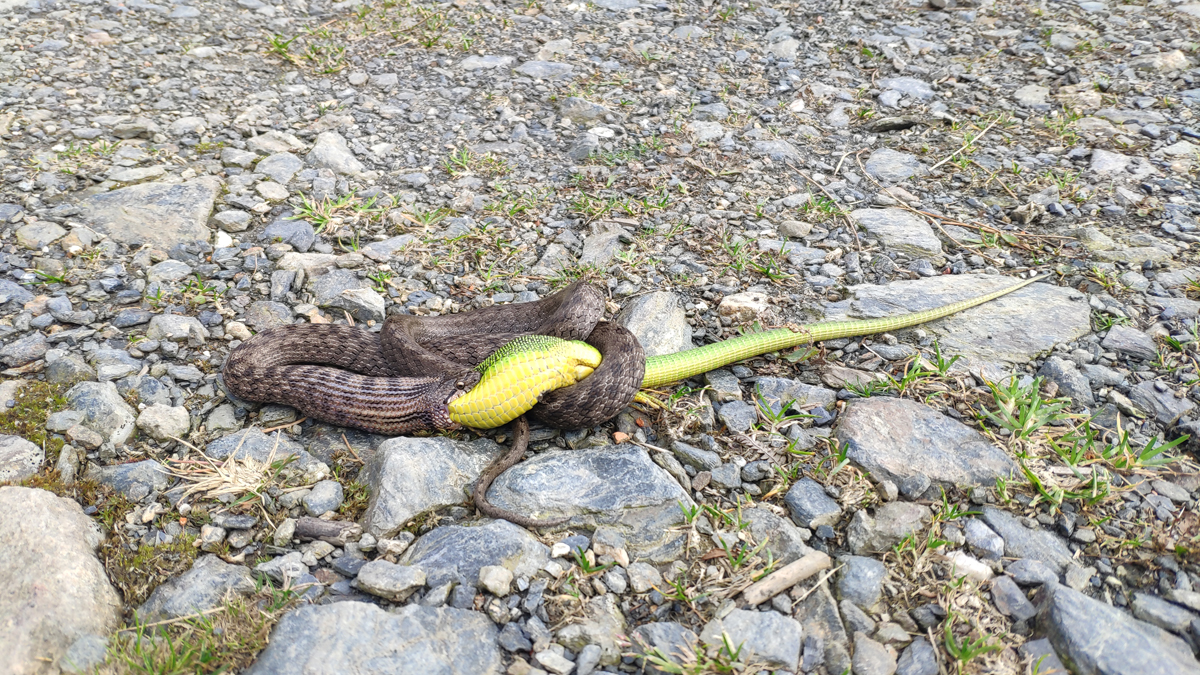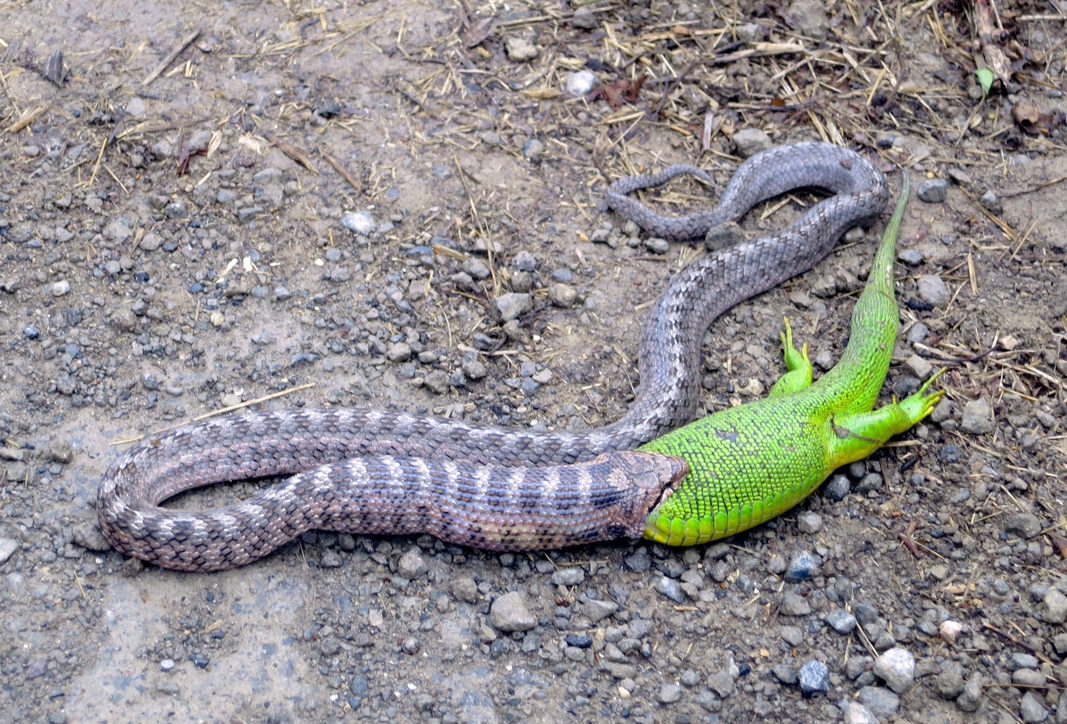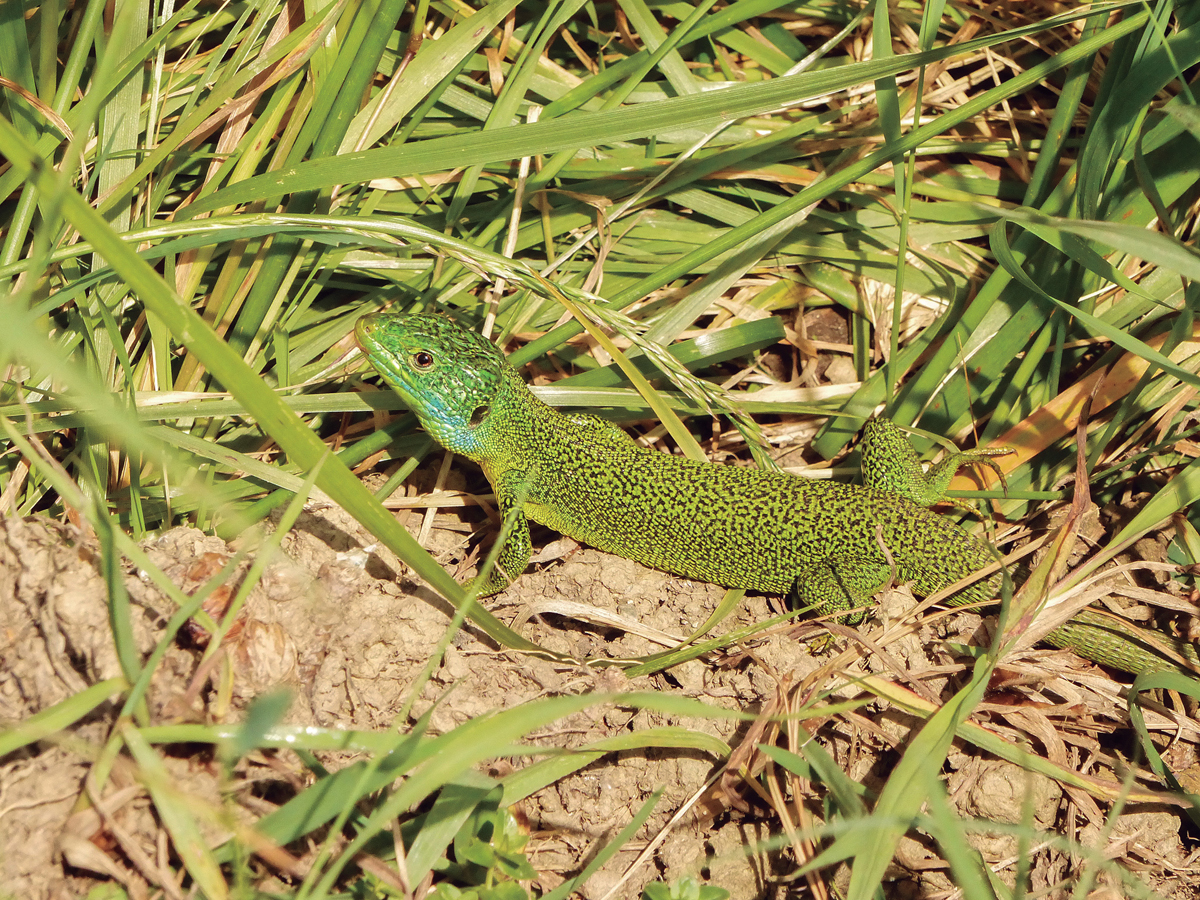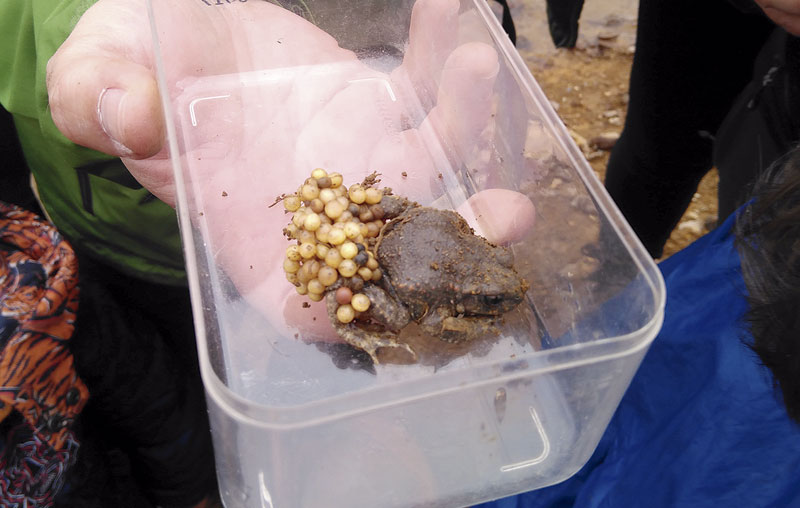To eat better!
- A brown snake is seen wrapped along the mountain road. It embraces a green mass. Stop, watch, and click: you've been photographed right now. The event could be left in a mere anecdote, but the image was sent to an expert. Because eating an adult lizard with soft snakes is not an everyday thing. In Europe, only three have been observed, two of them in the Basque Country.

2 November. 2020. With the help of the autumn wings, Silvia and Iñaki have proven the opportunity to turn the mountain in Goizueta. It's 11:55 when they walk on the Organbide runway. On a gravel and dirt road, the contrast between the long-shaped snake and the brown green lizard is evident on gray earth. The snake holds its food with the body and has already introduced the head and the front legs into the mouth.
24 September. 2012. Eight years before the observation of Silvia e Iñaki, Joseba Abrisketa sent a photograph to the Aranzadi herpetologists. In the Aldaiturriaga district of Amurrio he saw an unusual image: a snake eating an adult lizard.
So we have two eight-year photographs. Two testimonies. In both cases, the green lizard (Lacerta bilineata) is in the form of a soft southern snake (Coronella girondica). In both cases it is autumn. In both cases, the catches correspond to adult lizards. In the mornings, male. Amurrio, female.
It is known that the soft snake ate lizard puppies. We also know he's a lizard addict. And from time to time, and depending on the population, they also eat small mammals (mice, for example), but until now this snake has been documented only once eating adult musculature, done by the herpetologist Robert Jooris in 1995 in Aveyron, France.
In all cases snakes used the same strategy. The lizard was captured and swallowed by the mouth. In the image of Goizueta, in the orla, there is a step that you can't see in the one of Amurrio: the snake is wrapped around the lizard. In fact, this is the way to hunt for the gentle southern snake. Hold and squeeze the prey with the body and then insert its head through the mouth. Therefore, it is possible that Goizueta's lizard was captured by the photographer at the early stage of the capture. Feeling dead, like in Amurrio, doesn’t squeeze as much and keeps getting into his mouth.

To eat better!
By his observation in Aveyron, Jooris said that the lizard he had in his mouth was the biggest prey he had seen until then a soft snake. A snake of this size eats a lizard is not a cough in the middle of a goat's night. They have the ability to dislodge their jaw to enter and swallow through their mouth. So you can eat your prey and put the haze back in place. To eat better!
Then I would have helped with the body's muscles to put the lizard in. Thus, often fattened, slow, almost immobile snakes are observed which, due to the size of the prey they have eaten, take a long time to get ironing.
Reading the context
With the lizard, things are clear: In Amurrio and Goizueta, the green lizard is known and common in both municipalities. However, soft snakes can be two species. Only one is known in the town of Álava. Therefore, there is no doubt that the Amurrio snake is a soft snake from the south. In Goizueta, however, things are very different. Two species of smooth snakes are mentioned: The gentle snake from the north is the most common, but the image does not look like it.
The photo has passed through the eyes of eight experts: Euskal Herria, Galicia, Andalusia and Catalonia… After crossing the Iberian Peninsula, the photo of Goizueta reaches France. And so we get the result. As in Amurrio, the southern snake is the one that appears in the image. Despite being more scarce in the mornings, this is what the photographer has captured with the camera.
Context analysis also helps identify: open space next to the fern place. Solana, warm, rocky and with good orientation. The place of Goizueta was ideal for a species of Mediterranean origin.
Is the morning photo taken to an exceptional event, or is it a more common attitude than was expected in autumn a soft adult snake to hunt a mature green lizard during the day?
It's autumn. The time has passed for the cups of both species. Its activity has therefore already fallen a great deal. In the case of Goizueta, moreover, it is November. The snake, at least, should be in brumation (hibernation of reptiles). However, the south wind and the sun have allowed reptiles to warm up. They both leave their shelters hoping to eat something before the winter. In one of the two cases, however, there is a question that addresses herpetologists. It's an attitude that you see out of behaviors so far. The one in Amurrio, in daylight hours, was seen at 6:50 in the morning. It's common: the gentle southern snake is nocturnal, but it's also fond of dawn. According to studies, the soft snake captures at night species with daytime activity, especially when they are hidden in their shelters. However, throughout the day, the soft snake is hidden.
The fact of Goizueta was observed at 11:55. At noon. And then the question arises: Is the morning photo taken to an exceptional event, or is it a more common attitude than was expected in autumn a soft adult snake to hunt a mature green lizard during the day?
Who knows if any observation made through the Euskal Herria sites will reveal to us the hidden mysteries of the soft snake, or if, on the contrary, science will continue to do what it likes: leave the questions in the air, so that our eyes are attentive…
To see him better.
NOTE: This report is based on the scientific article that is about to be published in the Newsletter of the Spanish Herpetological Association. The authors of this article are Sanz - Azkue, I., Etxeberria, Aranaz, I. & Tellechea-Iraola, S.
Udaberriaren goxotasunera iratzarri da, eta gorputzaren berdetasunean ostarte urdin bat azaldu zaio: gorputz berdea, buru urdina. Zeru zati bat ireki da musker arraren urteroko zikloan. Iritsi da momentua: ugal garaia da. Landare artean nabarmentzeak, ordea, bere arriskuak ditu... [+]











